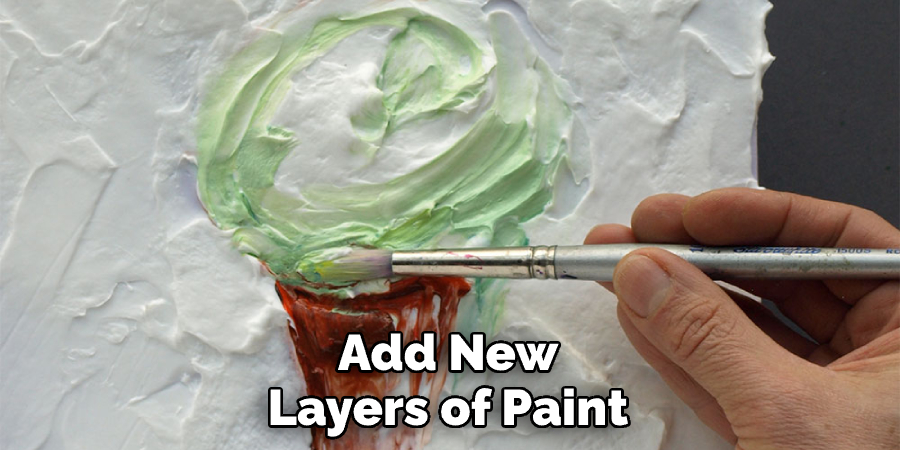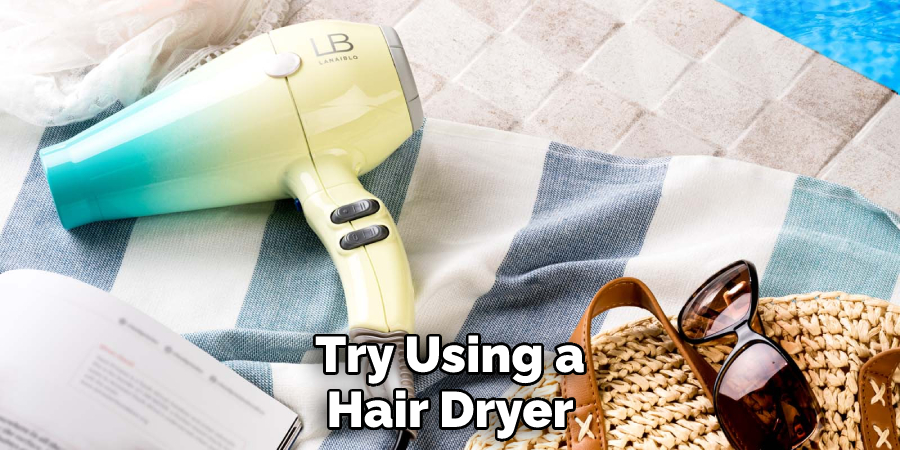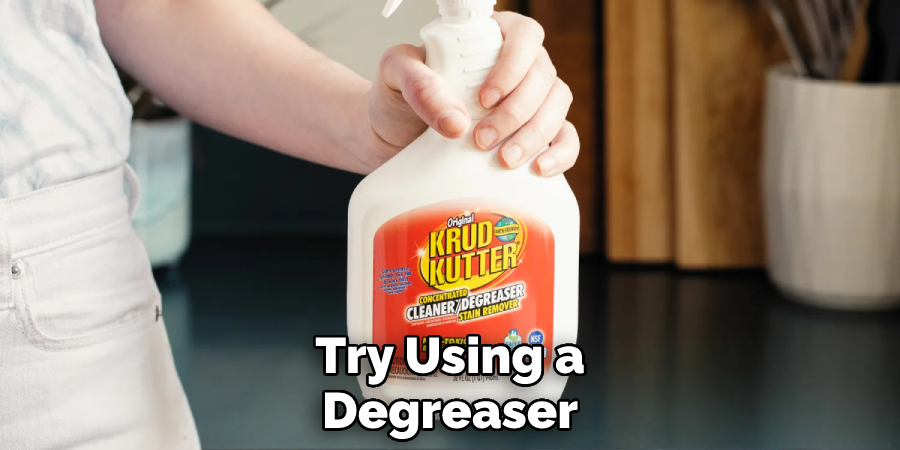Acrylic paint is a popular medium for artists because of its versatility and affordability. However, it can become sticky and difficult to work with when it dries. Fortunately, there are a few ways to fix this issue. This blog post will discuss how to fix sticky acrylic paint. We’ll also share some tips for preventing the paint from drying too quickly. So, if you’re having trouble with your acrylics, keep reading!

Summary: Sticky acrylic paint is a common and annoying problem for artists. To fix this issue, clean the surface with a damp cloth and allow it to dry. Once the painting is dry, apply a thin layer of matte varnish so the paint won’t stick together. Alternatively, you can use aerosol scent spray, which acts as an adhesive restrainer. Additionally, you can mix in a few drops of glycerin or an acrylic retarder with your paint to reduce the tackiness.
What Causes Acrylic Paint to Become Sticky?
There are a few reasons why acrylic paint may become sticky. First, the paint could be too old. Acrylic paint has a shelf life of about two years. After that, the ingredients in the paint start to break down, and the paint will become sticky. Second, the paint could be exposed to too much heat or humidity.
This can cause the paint to dry too quickly and become sticky. Third, the paint could be too thick. If the paint is too thick, it will take longer to dry and may become sticky. Additionally, some types of paint are more prone to stickiness than others. For example, heavy-bodied paints and Fluorescent colors are more likely to become sticky.
Another possible cause of sticky paint is using too much medium. Medium is a substance that is added to paint to thin it out. It can also be used to create different effects. However, if too much medium is used, it can make the paint sticky. Additionally, some types of the medium can cause the paint to become sticky. For example, Liquin (a type of medium made from linseed oil) is known for causing the paint to become sticky.
Why It’s Important to Fix Sticky Acrylic Paint
Acrylic paint that is sticky can be difficult to work with. It can be hard to apply the paint evenly, and it may not dry properly. Additionally, sticky paint can be difficult to remove from surfaces and clothing. In some cases, it can even damage surfaces. For these reasons, fixing sticky acrylic paint is important as soon as possible. Another reason to fix the paint is that it can become difficult to work with over time. Sticky paint will attract dust and dirt, making it hard to apply evenly.
Additionally, the paint may start to peel off in flakes. If this happens, it won’t be easy to fix the paint without starting over. Finally, sticky paint can make it difficult to add new layers of paint. If you’re trying to build up a painting, you may find that the new paint doesn’t adhere well to the sticky layer underneath. This can cause the paint to crack and peel. So, fixing sticky paint is important before it becomes too difficult to work with.

10 Ways How to Fix Sticky Acrylic Paint
1. Add a Retarding Agent
If your paint is sticky, you can try adding a retarding agent. A retarding agent is a substance that slows down the drying time of the paint. This will give you more time to work with the paint before it dries. You can find retarding agents at most art supply stores. To use a retarding agent, first, mix it with the paint. Then, apply the paint to your surface as usual.
2. Use an Airbrush
An airbrush is a tool that can be used to apply paint. It uses compressed air to create a fine mist of paint. This can help remove any sticky residue from the paint’s surface. Airbrushes can be found at most hardware stores or online. Be sure to read the instructions carefully before using one. To use an airbrush, first, mix the paint with water.
Then, hold the airbrush close to the paint’s surface and spray in a circular motion. Be sure to keep the air pressure low to avoid damaging the paint. Once the residue has been removed, allow the paint to dry completely.
3. Dilute Your Paint
If your paint is sticky, you can try diluting it with water. This will help to remove any sticky residue and make the paint easier to work with. First, add a small amount of water to your paint and mix it well. If the paint is still too thick, you can add more water until it reaches the desired consistency. Once you have diluted your paint, you can use it as normal. Try not to add too much water, as this can make the paint harder to control.
4. Use a thinner
If your paint is sticky, you can try using a thinner. A thinner liquid helps to thin out the paint and makes it easier to work with. However, you should only use a thinner if your paint is still in good condition and if you are careful not to overdo it. Too much thinner can ruin your paint. First, make sure your paint is well mixed to use a thinner. Then, add a few drops of thinner to the paint and stir it in. If the paint is still too thick, you can add thinner until it is the consistency that you want.
5. Use a Hair Dryer
If your paint is sticky, you can try using a hair dryer. The hair dryer’s heat will help remove any sticky residue from the paint. First, set the hair dryer to the low setting. Then, hold the hair dryer about 6 inches away from the affected area and move it back and forth. After a few minutes, you should notice the sticky residue starting to come off. If necessary, you can increase the heat setting on the hair dryer. Just be sure not to hold it too close to the paint, as this could damage the paint.

6. Use a Heat Gun
If your paint is sticky, you can try using a heat gun. A heat gun is a tool that emits a stream of hot air. This can help to loosen the paint and make it less sticky. To use a heat gun, hold it about 6 inches away from the surface of the paint. Move the heat gun back and forth over the area until the paint is no longer sticky. You may need to experiment with the distance and heat setting to find what works best.
7. Turn on a Fan
If your paint is sticky, you can try turning on a fan. The fan’s air will help dry the paint and remove any sticky residue. Keep the fan on for at least an hour or until the paint is completely dry. If you don’t have a fan, you can open a window or turn on the air conditioning.
8. Use denatured alcohol
If your paint is sticky, you can try using denatured alcohol. This will help to remove any sticky residue and make your paint dry faster. First, make sure that you have a small container of denatured alcohol and a clean cloth. Next, dip the cloth into the alcohol and then wipe it over the sticky area of your paint. Allow the alcohol to dry, and then check to see if the stickiness is gone. If it is, you can proceed with painting as usual. If the stickiness is still present, you may need to repeat this process.
9. Use a Degreaser
If your paint is sticky, you can try using a degreaser. This will help to remove any oils or other substances that may be causing the paint to be sticky. You can purchase a degreaser at most hardware stores. First, clean the area that you will be working on with soap and water. Next, apply the degreaser to a cloth and wipe it over the sticky area. Allow the degreaser to sit for a few minutes before wiping it off with a clean cloth.

10. Try another brand of paint
If you have tried all of the above methods and your paint is still sticky, you may need to try a different paint brand. Some brands of paint are more prone to being sticky than others. If this is the case, you may need to experiment with different brands until you find one that works for you.
You Can Check It Out To Fix Blocking Paint
Tips and Warnings on How to Fix Sticky Acrylic Paint
Tips
- Be sure to work in a well-ventilated area.
- If you are working with oil-based paint, use mineral spirits or paint thinner to clean up your brushes and thin the paint.
- Use water for cleanup if you are working with water-based paint.
- Work in smaller sections so the paint doesn’t have a chance to dry before you can fix it.
Warnings
- Do not add more paint to try fixing the problem, as this will only worsen it.
- Be sure to clean up your brushes and other materials thoroughly after use.
- If you are working with oil-based paint, be sure to dispose of any rags or other materials properly.
- If you are working with water-based paint, be sure to clean up any spills immediately.
- Wear gloves and a mask when working with any paint.

Conclusion
So there you have it, ten tips on how to fix sticky acrylic paint. If your paint is still sticky after trying all these methods, you may need to try a different paint brand. However, with a little bit of effort, you should be able to get your paint to dry properly and avoid any sticky messes. Thanks for reading!
